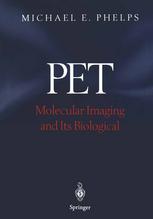

Most ebook files are in PDF format, so you can easily read them using various software such as Foxit Reader or directly on the Google Chrome browser.
Some ebook files are released by publishers in other formats such as .awz, .mobi, .epub, .fb2, etc. You may need to install specific software to read these formats on mobile/PC, such as Calibre.
Please read the tutorial at this link: https://ebookbell.com/faq
We offer FREE conversion to the popular formats you request; however, this may take some time. Therefore, right after payment, please email us, and we will try to provide the service as quickly as possible.
For some exceptional file formats or broken links (if any), please refrain from opening any disputes. Instead, email us first, and we will try to assist within a maximum of 6 hours.
EbookBell Team

4.8
104 reviewsThis book is written as both a text and a reference book. It contains numerous images from the biological sciences and clinical practice, tables, graphs, and fig ures, as well as exercises that are worked out to aid the reader in understanding principles or solving problems. In some cases, derivations are placed in appen dices so as not to break up the flow of the subject matter in the text. The book is intended for a broad audience interested in molecular imaging with positron emission tomography (PET). It is expected that the readers will range from undergraduate, graduate, and medical students to residents, physi cians, and scientists with backgrounds from various physical, biological, and medical specialty areas. Each chapter presents material in a straightforward man ner that is well illustrated and explained. Because of the diverse audience for the book, certain chapters or sections of chapters will be of more interest than oth ers to certain segments of the readership. Chapter 1 introduces the fundamental physics upon which PET imaging sys tems is based and discusses in detail the technologies and methods used to pro duce PET images. The chapter starts out by reviewing the physics of positron emission and annihilation and explains how positron range and photon non colinearity in coincidence detection place certain limits on spatial resolution.